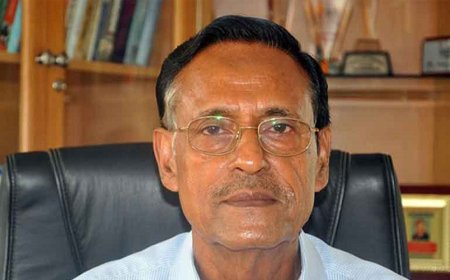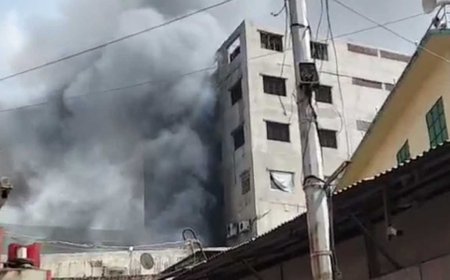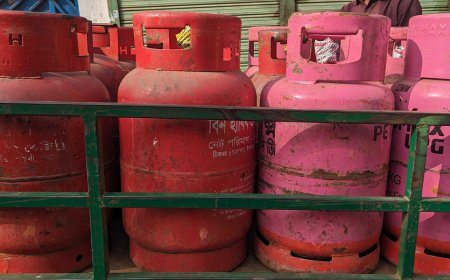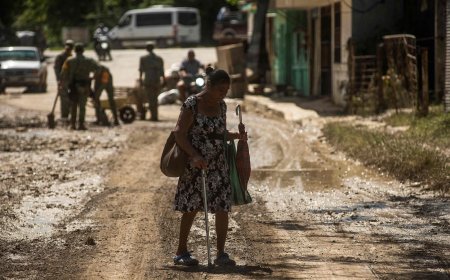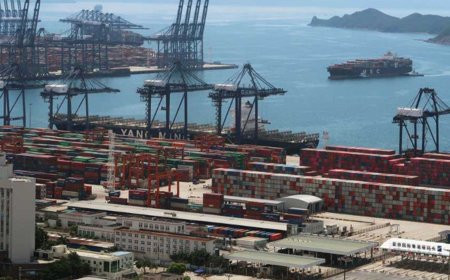"Devastating earthquake strikes Myanmar and Thailand, causing mass casualties"
"A powerful 7.7-magnitude earthquake struck northwest of Sagaing city on Friday afternoon at a shallow depth."
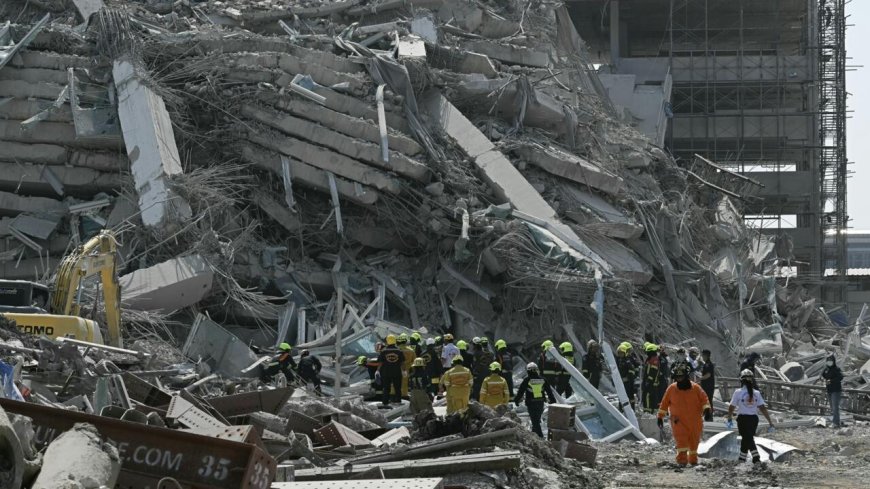
Massive Earthquake Strikes Myanmar and Thailand, Causing Widespread Devastation
A powerful earthquake struck Myanmar and neighboring Thailand on Friday, turning a major hospital in Myanmar’s capital into a "mass casualty area" and trapping dozens of workers inside an under-construction skyscraper in Bangkok.
The 7.7-magnitude tremor hit northwest of Sagaing city on Friday afternoon at a shallow depth, according to the United States Geological Survey. Minutes later, a 6.4-magnitude aftershock followed, further intensifying the destruction.
Extensive Damage in Myanmar
The earthquakes caused widespread destruction, particularly in Myanmar, where buildings collapsed, roads split open, and the well-known Ava Bridge near the epicenter was reduced to rubble.
In Naypyidaw, the capital, AFP journalists witnessed the entrance of the emergency department at the city's main hospital crushed onto a car. Patients were treated outside, with intravenous drips hanging from their gurneys. Some victims writhed in pain, while others lay motionless as family members sought to comfort them. A hospital official asked journalists to leave, declaring, "This is a mass casualty area."
Another hospital official reported that hundreds of injured individuals had arrived at the facility.
“I have never seen anything like this before. We are doing our best to manage the situation, but I am completely exhausted,” a doctor told AFP.
Traffic around the hospital was chaotic, with ambulances struggling to navigate through. A paramedic was heard pleading, "Move aside so the ambulance can get through."
At the city's National Museum, ceiling pieces fell as the building shook. Staff members ran outside, some visibly shaken and tearful, while others frantically used their phones to check on their loved ones.
Skyscraper Collapse in Thailand
Across the border in Thailand, where strong earthquakes are rare, the tremors caused widespread panic. Residents in multiple cities rushed into the streets.
In Bangkok, a 30-story under-construction government building collapsed, trapping 43 workers inside. Videos shared on social media showed the massive structure reduced to rubble and twisted metal within seconds.
An AFP photographer on-site reported a large presence of ambulances and rescue teams near Chatuchak Market, a popular spot for both tourists and locals.
“When I arrived, I could hear people trapped under the debris crying for help,” said Worapat Sukthai, deputy police chief of Bang Sue district. “We estimate hundreds are injured, but the total casualties are still being determined.”
Across Bangkok and the northern tourist hub of Chiang Mai, brief power outages were reported, adding to the chaos as residents struggled to process the unprecedented quake.
Sai, a 76-year-old shopkeeper in the northern city, described his experience: “I quickly rushed out of the store along with other customers. This is the strongest tremor I have ever felt.”
Emergency Response and Regional Impact
In response to the crisis, Thai Prime Minister Paetongtarn Shinawatra declared a state of emergency in Bangkok. Some metro and light rail services were suspended, worsening the city's infamous traffic congestion. Airports, however, continued operating as usual.
The prime minister, who had been on an official visit to Phuket, returned to Bangkok for an emergency meeting following the disaster.
The quake’s impact extended beyond Myanmar and Thailand, with tremors felt in China, Cambodia, Bangladesh, and India.
In China, a livestream from Beijing News showed emergency workers surveying damage in Ruili, a border city near Myanmar. Videos on social media depicted debris falling from high-rise buildings and panicked residents fleeing the streets.
India’s Prime Minister Narendra Modi expressed readiness to provide “all possible assistance” to Myanmar and Thailand, placing authorities on standby for aid requests.
History of Seismic Activity in Myanmar
Myanmar frequently experiences earthquakes, with six major quakes of 7.0 magnitude or higher recorded between 1930 and 1956 along the Sagaing Fault, which runs north to south through the country’s center.
In 2016, a 6.8-magnitude earthquake in Bagan, an ancient capital, killed three people and damaged numerous historical temples, toppling spires and crumbling centuries-old walls.
Friday’s devastating quake adds to Myanmar’s history of seismic activity, leaving communities grappling with immense loss and destruction.
What's Your Reaction?










